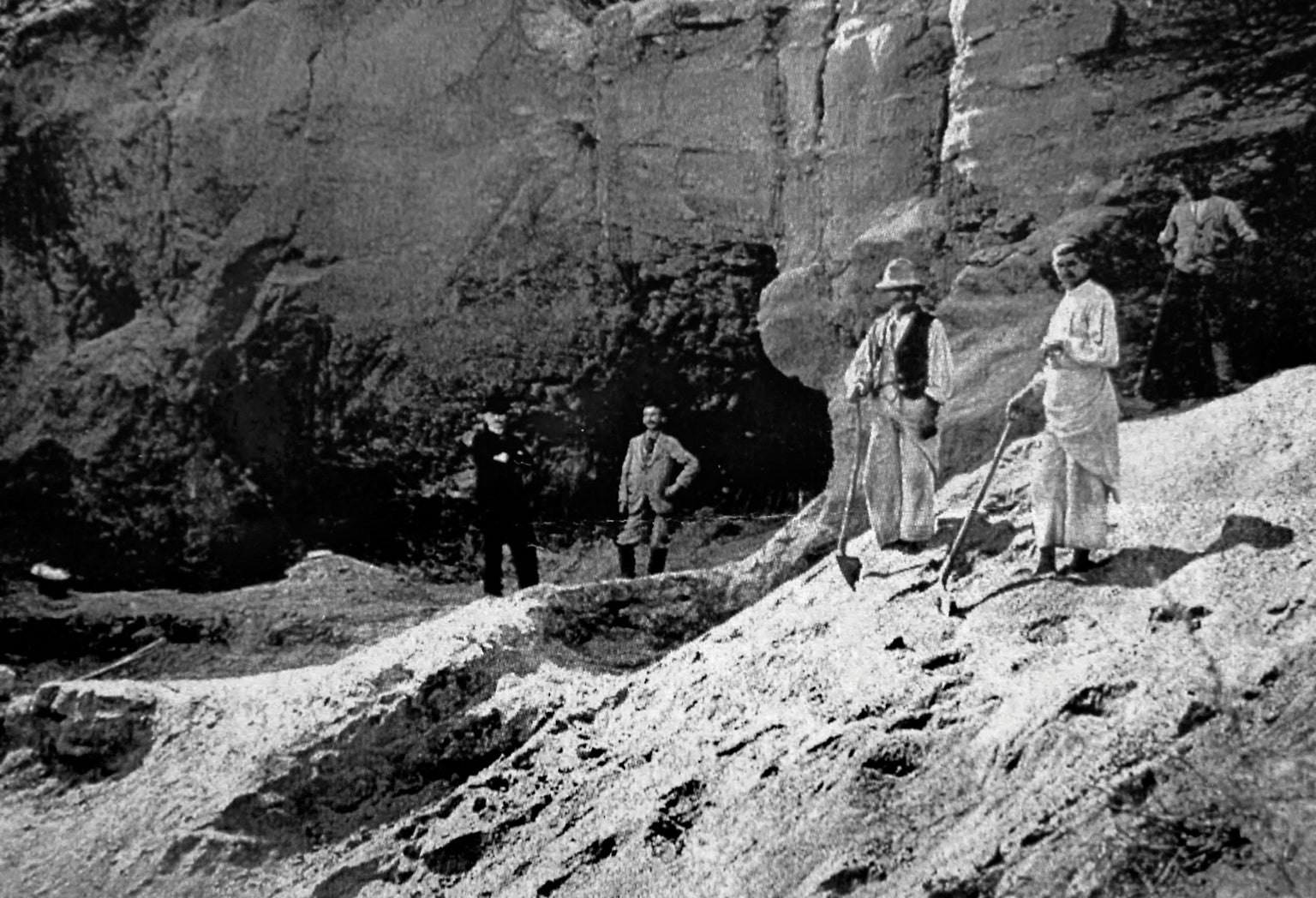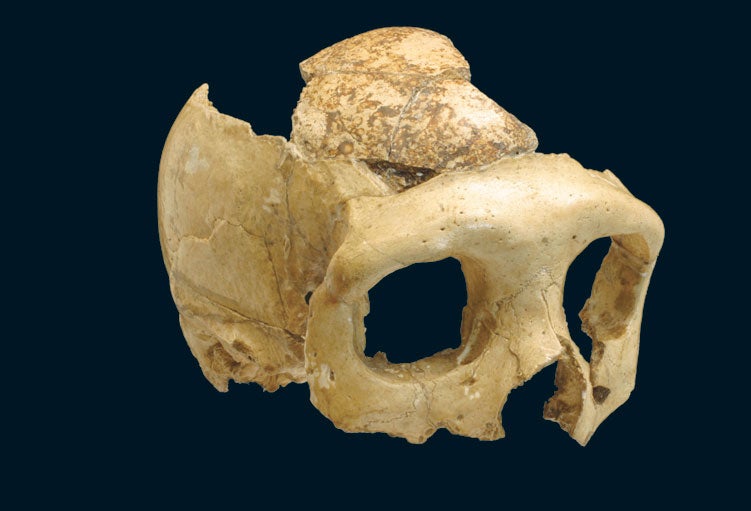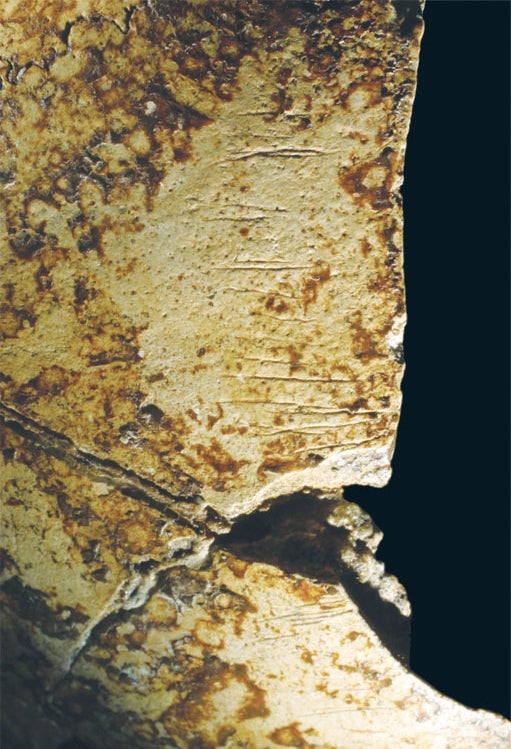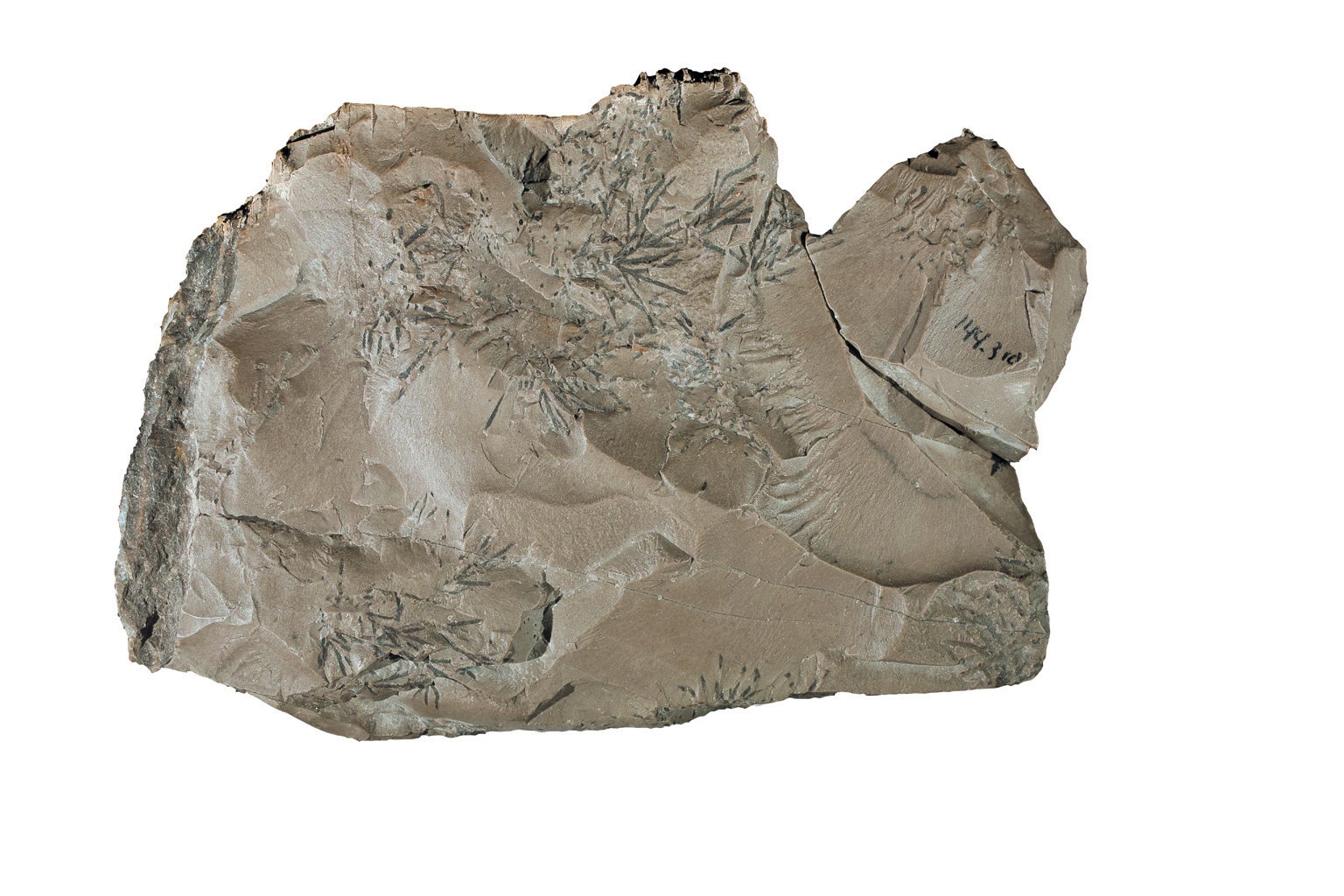Rockshelter Discoveries Show Neandertals Were a Lot Like Us

Last March, as Texas and Mississippi lifted their coronavirus pandemic mask mandates against the advice of health officials, President Joe Biden accused the governors of those states of “Neandertal thinking.” Biden was right to be concerned about rolling back coronavirus restrictions too soon, but he was wrong to use our evolutionary cousins as the basis for his reprimand.
Biden is hardly alone in wielding “Neandertal” as a pejorative term. In popular culture, it is common to make fun of Neandertals, pointing to their primitive physical features, their backward ways, their overall stupidity. Merriam-Webster suggests “clod,” “lout” and “oaf” as suitable synonyms for “Neandertal.” Even some of our paleoanthropologist colleagues consider Neandertals—who ruled Eurasia from 350,000 to 30,000 years ago—less than human, deficient in many of the cognitive and behavioral abilities typical of our kind.
Yet numerous studies underscore the similarities between Neandertals and us. Finds at Neandertal sites across Eurasia show that they had innovative technology, complex foraging strategies and nascent symbolic traditions.
Not everyone is convinced. Critics have argued that Neandertals learned advanced behaviors or acquired fancy goods from the modern humans they encountered rather than developing them independently.
Our research on Neandertal material from the site of Krapina in northwestern Croatia over the past 15 years provides evidence that the critics are wrong. The Neandertals there exhibited a range of behaviors traditionally assumed to be unique to modern humans, and they developed these behaviors independently, tens of thousands of years before modern humans arrived in this region. Much remains to be discovered about these enigmatic members of the human family, but it is now abundantly clear that they were behaving in cognitively sophisticated ways long before they ever met up with the likes of us.
THE ORIGINAL OTHERS
The Neandertals’ bad rap traces back to the mid-1800s, when British geologist William King wrote of the skull of the first Neandertal fossil from Germany: “the thoughts and desires which once dwelt within it never soared beyond those of the brute.” This perception of Neandertals gained currency in the early 1900s, when French anatomist Marcellin Boule reconstructed a Neandertal skeleton from the site of La Chapelle-aux-Saints in France as a stooped, apelike creature—one that he saw as primitive in body and therefore mind. Ever since, paleoanthropologists have been debating just how much like us the Neandertals were in terms of anatomy as well as behavior.
For a long time it looked as though Neandertal behavior differed from that of early modern humans in several important respects. Researchers argued that Neandertals had the same tool kit for tens of thousands of years, whereas early modern humans eventually went on to make a variety of more complex tools that used a wider range of raw materials and took more steps to create. Similarly, moderns appeared to eat a far more varied diet of animal and plant foods compared with the Neandertals’ apparent focus on large game. And moderns seemed to be unique in developing art and rituals.

Krapina Rockshelter in northern Croatia, excavated at the start of the 20th century, was inhabited by Neandertals 130,000 years ago. Credit: Croatian Natural History Museum; all artifacts are housed at and shown courtesy of Croatian Natural History Museum
In recent years, though, paleoanthropologists have recovered evidence of Neandertals behaving in ways no one would have predicted just a couple of decades ago. Bruce Hardy and his colleagues have found bits of ancient twisted thread at the site of Abris du Maras in France that show Neandertals had fiber technology. Marie Soressi and her collaborators discovered specialized bone tools called lissoirs, which are used for leatherworking, at Pech-de-l’Azé rockshelter in France. João Zilhão and his team have shown that Neandertals were eating mussels, crabs, sharks and seals, among other marine resources, at Figueira Brava in Portugal and other coastal sites. Elsewhere in Europe researchers have found indications that Neandertals exploited a wide variety of plant foods and even mushrooms.
It is not just previously unknown Neandertal technology and dietary strategies that have come to light. Other discoveries demonstrate that Neandertals engaged in symbolic behaviors, such as decorating their bodies and making art. Marco Peresani and his group have reported on cut marks on bird wings found in Fumane Cave in Italy that indicate Neandertals were collecting feathers. A team led by Clive Finlayson uncovered an abstract image resembling a hashtag etched into the floor of Gorham’s Cave in Gibraltar. Dirk Leder and his colleagues found a toe bone from a giant deer engraved with a geometric pattern at the site of Einhornhöhle in Germany.
Researchers have unearthed many such examples of Neandertal creativity. But controversy has often accompanied their claims. Most evidence of Neandertal symbolism dates to the latter part of the Neandertals’ reign, by which point anatomically modern humans were beginning to filter into Europe. Perhaps, critics have suggested, Neandertals merely copied what moderns were doing or obtained symbolic items from them through trade or even theft. Alternatively, at cave sites that were inhabited at different times by both groups, maybe natural disturbances—such as moving water or denning animals—mixed modern goods in with Neandertal remains. What investigators needed to find to bolster their case for Neandertal sophistication was evidence of advanced Neandertal behavior that was substantially older than the earliest-known modern humans in Europe. This is where our work at Krapina comes in.


Neandertal cranium from Krapina (top) bears a series of parallel cut marks on the forehead that probably signify ritual behavior (bottom). Credit: Luka Mjeda (top); David W, Frayer (bottom)
SYMBOLIC BEHAVIOR
From 1899 to 1905 Croatian paleontologist Dragutin Gorjanović-Kramberger directed excavations at the Krapina rockshelter, collecting some 900 Neandertal bones, nearly 200 isolated Neandertal teeth, and thousands of animal bones and stone tools. He was a meticulous excavator. Uncommonly for his era, he dug in levels—removing one horizontal layer of sediment, bones and artifacts at a time—and saved much of what he excavated. In 1906 Gorjanović-Kramberger published a comprehensive monograph on the bones and tools from the site. To this day, Krapina remains one of Europe’s richest Neandertal sites; thousands of publications about its inhabitants have appeared since 1899.
Our recent research provides unexpected new insights into the Neandertals who lived and died at Krapina some 130,000 years ago. In 2013 one of us (Radovčić) did a complete inventory of all the material from the site and “rediscovered” some unusual white-tailed eagle remains—eight talons and a foot bone—whose importance had previously gone unappreciated. Each bore multiple signs of having been intentionally modified. Discovered in the uppermost level at the site, the talons and foot bone were found in the same sedimentary layer as many cave bear bones, Neandertal tools, a fragmentary child’s cranium and at least one hearth. No modern humans or modern tools are found at Krapina, so there is no doubt these white-tailed eagle bones are associated with Neandertals.
In life, eagle talons are covered with a thick carapace, which must have been stripped off, given the subsequent modifications on all the Krapina talons. One talon has cut marks on its upper surface and a preserved sinew fiber under a natural silicate coating, along with microscopic bits of red and yellow ochre in the pores on its surface. Three of the other Krapina talons and the phalanx show cut marks. The edges of many of these marks are eroded, which we think may be the result of the talons having been tied together with a binding such as sinew. Other marks, including notches cut into some of the talons, support the hypothesis that these talons were strung into some kind of ornamental object—probably a necklace or bracelet or perhaps a rattle.
We know from the duplication of right second talons in this assemblage that the eight talons and foot bone came from at least three different white-tailed eagles. In the Paleolithic, as in modern times, eagles were the largest aerial predators around. Their rarity in the landscape would have made them difficult prey to catch. It therefore seems unlikely this was a random collection of eagle feet.
Instead these remains signal that the Krapina Neandertals had some kind of specialized hunting strategy. Although single talons have turned up at other Neandertal sites and probably served as pendants, no other Neandertal site has yielded eight talons from the same archaeological level.
The eagle talons are not the only sign of symbolic behavior among the Krapina Neandertals. The site has also yielded a unique rock with starburstlike inclusions that went undescribed until Radovčić noticed it while inventorying the collection. Formed of mudstone dating to the Middle Triassic epoch, the rock could not have originated in the Krapina rockshelter, which is composed of sandstone. Rather it seems that a Neandertal collected it from nearby outcrops of rock to the north of the site. Measuring 92 by 66 millimeters, with a maximum thickness of 17 millimeters, it easily fits in the hand. Because it shows no signs of surface modification or use wear, we can be fairly certain it was not used as a tool.
The rock is remarkable for its numerous dendritic structures, which are exposed in cross section and longitudinally. The structures have a three-dimensional appearance and are especially brilliant when the piece is wet, which increases the contrast between the striking black branching structures and the brown cortex. At the bottom of the rock a long, curved black feature traverses the entire lower face with a concentration of dendritic forms in the midpoint. It is apparently the impression of some kind of fossilized plant stem.
Any modern-day rockhound would collect a rock like this one. Did a Krapina Neandertal experience that same feeling of wonder about this uniquely patterned stone when she or he picked it up? In any case, the object generated enough interest that its discoverer brought it home. The collection and curation of this stone show that Neandertals had an eye for aesthetically pleasing objects and assigned significance to them.
A partial Neandertal cranium from the site, known as Krapina 3, provides a different kind of evidence for symbolic behavior. Assessed as a female based on its size and comparatively delicate build, the specimen bears 35 mostly parallel striations that run up the forehead. The marks show no signs of healing, so we know they were made after death. Other Neandertal bones from Krapina exhibit cut marks associated with defleshing related to cannibalism. But the cut marks on Krapina 3 are evenly spaced and differ from the closely packed criss-crossing butchering marks on these other specimens from the site. Nor do the cut marks appear to be the result of trampling of the bones by animals, which would have left more randomly scattered, overlapping marks.
Sometimes when anthropologists measure bones with calipers, the instrument can leave marks on the bone. But none of the standard measurements anthropologists take on skulls involve this part of the forehead. What is more, we know the cut marks are old because they are filled with cave sediment that buried the bone and are covered with lacquer, which paleontologists used to apply to fossils to preserve them. All these factors strongly suggest that a Neandertal made the marks.
Researchers have observed linear marks on bones at a few other Neandertal sites, but so far these cases involve only limb bones from animals found at these locales. The marks on the Krapina 3 Neandertal skull deviate from all the other examples of bone modification at the site and are unique in the fossil record. They probably signify some kind of ritual behavior, whether ceremonial modification of the remains of a loved one, numerical recording or doodling. Whatever the exact symbolic significance of these cut marks, the eagle talons or the starry stone, Neandertals were ascribing meaning to them 130,000 years ago—90,000 years before modern humans reached Croatia.

Mudstone rock found at Krapina appears to have been collected by a Neandertal for its aesthetic appeal. Credit: Luka Mjeda
RIGHTIES AND LEFTIES
Another symbolic behavior—one that scholars have often held up as a defining characteristic of modern humans and the secret of our success as a species—is language. Did Neandertals have language? Did they gossip about their neighbors, talk about their hopes and fears, tell their children bedtime stories? Without a time machine to transport us back to their era, we cannot know for certain. But there are hints in the archaeological and fossil records. A number of archaeologists consider body ornaments and other physical manifestations of symbolism to be proxies for language. Neandertal fossils themselves also contain clues.
We set out to determine whether Neandertals preferentially used one hand over the other in their daily tasks. Right-handedness is a common human trait; right-handers dominate left-handers in every living human population. Handedness reflects the fact that the two hemispheres of the brain are asymmetrical, with each side specialized for different tasks. This brain lateralization, as it is termed, is associated with language capacity. Other primates exhibit varying degrees of lateralization, but only humans show such a high frequency of right-handedness.
To assess the handedness of the Krapina Neandertals, we used optical and scanning electron microscopy to examine scratches in the enamel of their incisor and canine teeth. These striations, which occur exclusively on the lip side of the teeth, were produced when a stone tool accidentally etched the enamel. This kind of damage can occur when an individual uses his or her teeth as a third hand of sorts to grip an object—for instance, an animal hide. When a right-hander holds a tool and rakes it across material held between the front teeth, as one might do to clean an animal hide, any time the tool hits a tooth, it will leave a right-angled scratch on the tooth. A left-hander leaves an oppositely angled scratch. By studying the angles of the scratch marks evident in even a single fossil tooth, we can determine whether it belonged to a right-handed or left-handed individual.
Our analysis of the Krapina Neandertal teeth identified nine right-handers and two left-handers. If we expand our sample to include Neandertals from other European sites, the ratio of right-handers to left-handers replicates the typical 9:1 pattern of living humans. Interestingly, this pronounced dominance of right-handedness is not found first in Neandertals but extends back to their European predecessors and an even earlier member of our genus, Homo, from Africa. Apparently hemispheric brain asymmetry—and thus perhaps language—is an ancient human trait.
Neandertals had more than just behavior in common with modern humans. In-depth studies at Krapina and other sites show that many morphological characteristics once thought to be unique to Neandertals are found in moderns, and some modern features are found in Neandertals. One such trait is the form of an opening on the tongue side of the lower jaw (mandible) called the mandibular foramen. The mandibular nerve passes through this opening to innervate the teeth, gums and chin. In modern humans, the upper portion of the foramen is commonly V-shaped. In most Neandertals, the opening is covered by a bar of bone and is called a horizontal-oval (H-O) foramen. But at Krapina, only four of the nine Neandertal mandibles that preserve this part of the bone have the typical Neandertal H-O foramen; five show the modern V-shaped pattern.
Numerous other cranial and postcranial features in the Krapina Neandertals overlap with early modern humans, too. No doubt Neandertals had a distinctive morphology, but many of their traits are also found much later in the modern people who followed them. It is very unlikely moderns independently evolved these Neandertal-like traits. Rather there was probably a lot of variation in Neandertal morphology, and in later times some interbreeding occurred between them and our modern European ancestors. The “unique” traits were passed on as part of these interbreeding events. Given the apparent cognitive similarities between Neandertals and early modern humans, we should perhaps not be surprised that the two groups saw each other as humans and exchanged genes when they encountered each other.
Despite the fact that excavations at Krapina were concluded more than a century ago, the stones and bones from the site continue to provide new information about Neandertals and their place in human evolution. Undoubtedly more secrets remain to be revealed in the Krapina collection. We are endeavoring to tease out some of them. For example, with colleagues from England and Italy, we have been obtaining high-resolution, synchrotron images of baby teeth from the site to evaluate growth rates as measured by enamel formation. Modern humans are unique among living primates in having an extended period of childhood growth, which gives our large, powerful brains time to develop. Researchers have debated just how similar Neandertal childhood development was to that of moderns’. Our results show that Neandertal infants formed their enamel a little faster than moderns, indicating a more rapid growth rate on average. Yet it was still in the modern range.
Mounting evidence from sites across Europe is forcing scientists to rethink their conception of these long-disparaged members of the human family. The Krapina Neandertals are an important part of this shift. We suspect that future discoveries at Krapina and beyond will further narrow the list of behavioral and anatomical traits that supposedly set Neandertals apart from moderns. They were not the same as us. But we have far more in common with them than not.
This article is dedicated to the memory of Jakov Radovčić, who served as curator of the Krapina Neandertal Collection for 32 years.
David W. Frayer is an emeritus professor of biological anthropology at the University of Kansas. He has studied skeletal variation and behavior in Neandertals and other early human populations spanning more than a million years.
Davorka Radovčić is curator of the Krapina Neandertal Collection at the Croatian Natural History Museum. Her research focuses on Neandertals, early modern humans and Homo naledi.
